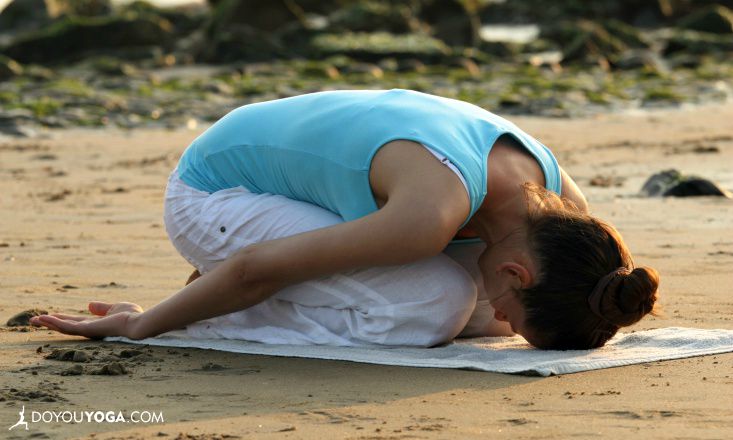My favorite tool I’ve learned to use in my years of practicing Ayurveda and Yoga is the lens of the 5 elements. Earth, water, fire, wind and space combine to compose our entire reality.
Although all five elements are always present in all things, the predominance of one or another bestows each thing with its uniqueness.
At first, just the poetry of this way of seeing the world caught my attention. But I felt really bowled over and filled with awe and inspiration when I realized that I could connect with this reality from a feeling, intuitive place: when I understood that feeling grounded and stable depended upon my relationship to earth element and that fire element fueled my passion and transformation.
Earth element is the principle of stability.
 Yantra representation for the Earth element, by Susan Fauman
Yantra representation for the Earth element, by Susan FaumanIn your body, this emerges as growth, accumulation and support; the muscle tissue, fat tissue and hard part of your bones depend heavily upon earth element. Earth element expresses as cool, stable, heavy, dense, and hard.
When you express a healthy connection to earth element, you feel stable and rooted. Emotionally you are grounded and confident, but flexible. You make well-considered decisions and do not waver in carrying them out.
Earth element supports commitment and confidence. By working with the elements in your yoga practice, you can “purify” them. This means that they are able to do their job to support your health in the way they are each best able to.
Here are 3 poses to connect more deeply with and “purify” earth element in your yoga practice.
1. Pose of Hare (Shashankasana)


After a few repetitions, allow your torso to come all the way forward, touching your forehead to the ground if possible before lifting back up. Focus on straightening and lengthening your back as you lift back up to sitting. Repeat 8-20 times.
Benefits: This pose coordinates your deep, belly breathing with your movement, encouraging you to always move from your grounded, rooted center.
2. Animal Pose (Saithyaliasana)
Starting from kneeling, bring your hands to the floor and shift your hips so they come to the ground to the right of your feet. Bring your right knee forward and your left leg back, touching the sole of your right foot to your left thigh near your left knee. Shift your hips so that your right knee is pointing directly away from your center line.
 Credit: Susan Fauman
Credit: Susan FaumanInhale and lengthen your back and then, exhaling, fold forward, aiming the center of your chest towards your front knee. Keep your right arm bent with the hand close to your right knee and lengthen your left arm out long in front of you.
Breathe deeply and keep trying to square your chest and hips to the floor. Hold for 8-108 breaths.
Benefits: This posture has a very subtle and deep effect on your hips and harmonizes the discrimination function of your liver with the expansive nature of your heart, helping you to develop and maintain healthy boundaries.
3. Squatting Pose (Vayu Nishkasana)
Come to a squatting position with your feet about hip distance apart at about a 45 degree angle, toes out. If you can’t squat like this with your heels resting on the ground, place a blanket or a block under your heels. Bring your hands to the floor in front of you or, if your heels are on the floor, tuck your fingertips under the arches of your feet.
 Credit: Susan Fauman
Credit: Susan FaumanInhale and look upwards, lifting your chest and straightening your arms. Imagine you could put a little arch in your lower back. Exhaling, lift your hips and fold forward, dropping your head and pulling against the arches of your feet with your hands. Lift your shoulders and spread your elbows out to the sides.
Inhale and return to the squatting position. Hold for a few breaths in either position to deepen the opening there. Repeat 8-20 times.
Benefits: This posture stimulates and opens the earth channel (prthvi nadi) which runs from the ball of your foot, through your heels, up the back of your legs, through your sit-bones, alongside your spine and over the top of your skull to the roof of your mouth. When this channel is flowing properly, you feel connected to the earth and rooted. When it is blocked or cramped, you may feel spaced out or disconnected.
These poses, added into your asana practice, will help you feel more calm, grounded and present. What are some of your favorite practices for getting rooted when things get a bit crazy?


